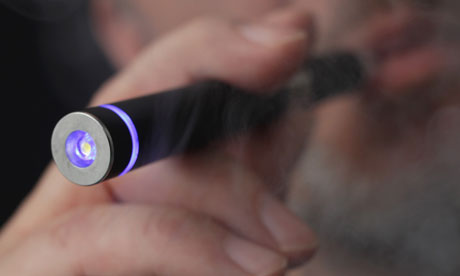E-cigarette awareness goes up, as (apparently) so does skepticism
Americans are unquestionably more aware of e-cigarettes, those vapor-emitting alternatives to tobacco cigarettes, according to a national survey. Yet, at the same time, the belief that e-cigarettes are safer than traditional smokes may be starting to diminish.
A national survey of 3,630 adults found that 77 percent of the respondents have heard of e-cigarettes; that’s way up from 16 percent just five years ago. But the perception that e-cigarettes are actually less harmful than tobacco cigarettes among current smokers decreased slightly, from 84 to 65 percent, indicating perhaps that skepticism and/or concerns are starting to develop. Also, while e-cigarettes have been touted as a new way to help smokers quit, this study found that simply being aware of e-cigarettes or thinking they are less harmful bore no relation to, or had no impact on, someone’s intent to quit smoking.
The findings from the survey of 3,630 American adults aged 18 and older are reported in the American Journal of Preventive Medicine in the article “E-Cigarette Awareness and Perceived Harmfulness: Prevalence and Associations with Smoking-Cessation and Outcomes.” Andy S.L. Tan, Ph.D., a postdoctoral fellow at the University of Pennsylvania’s Annenberg School for Communication; and Cabral A. Bigman, Ph.D., an assistant professor at the University of Illinois-Champaign, are the researchers.
Drs. Tan and Bigman analyzed data from a mail-in survey conducted by the National Cancer Institute and compared the results from their October 2012 – January 2013 survey to prior large-scale surveys on the public’s awareness and perceptions about e-cigarettes. The respondents were approximately evenly split by gender; mostly white (61.6 percent), they either had some college education or a college degree (64.9 percent), or were non-smokers (58.1 percent).
In addition to the aforementioned overall levels of awareness and possible increases in skepticism about e-cigarettes, there were notable differences in awareness across certain populations. For example, the study found that e-cigarette awareness was lowest among older, non-white, and less-educated respondents. Awareness was 67.8 percent for respondents aged 65 years and older, 64.3 percent for Hispanics, and 65.0 percent among respondents with a high school education or less.
E-cigarette use is growing in the U.S., with sales around $1.7 billion (a sizable amount considering that only six percent of smokers currently use e-cigarettes.) The New York Times recently reported there are 5,000 e-cigarette stores, colloquially referred to as vapor or “vape shops,” in the country. At the same time, the U.S. Food and Drug Administration recently proposed rules to regulate e-cigarettes, including the prohibition of sale to minors.
 Local and state governments are struggling with the idea of regulation - should e-cigarettes be treated like tobacco products? Some argue they are “vapor-products” and therefore should be considered a new category. Regardless of the definition, some municipalities are regulating e-cigarettes the same way cigarettes are regulated. The city of Philadelphia just recently banned the use of e-cigarettes in public places.
Local and state governments are struggling with the idea of regulation - should e-cigarettes be treated like tobacco products? Some argue they are “vapor-products” and therefore should be considered a new category. Regardless of the definition, some municipalities are regulating e-cigarettes the same way cigarettes are regulated. The city of Philadelphia just recently banned the use of e-cigarettes in public places.
“Given the rapidly evolving landscape in advertising and media coverage of e-cigarettes, the first objective of this study is to describe the prevalence of awareness and perceived harmfulness of e-cigarettes,” Drs. Tan and Bigman write.
Drs. Tan and Bigman say that increasing prevalence of e-cigarettes in the market and presence in the media could pose a public health threat because the evidence is not yet clear on whether these products will ultimately help or hurt efforts to reduce rates of smoking. They recommend that future research monitor smokers’ exposure to e-cigarette information, their beliefs about using e-cigarettes to quit smoking, and whether they successfully quit smoking over time.
###
Joseph J. Diorio
jdiorio@asc.upenn.edu
215-746-1798
University of Pennsylvania Annenberg School for Communication